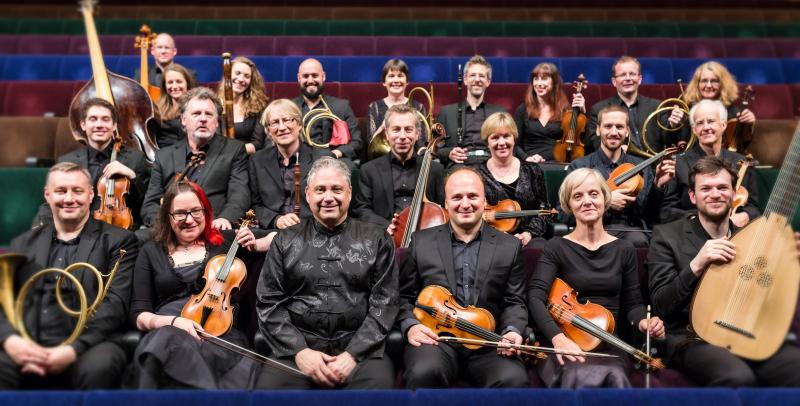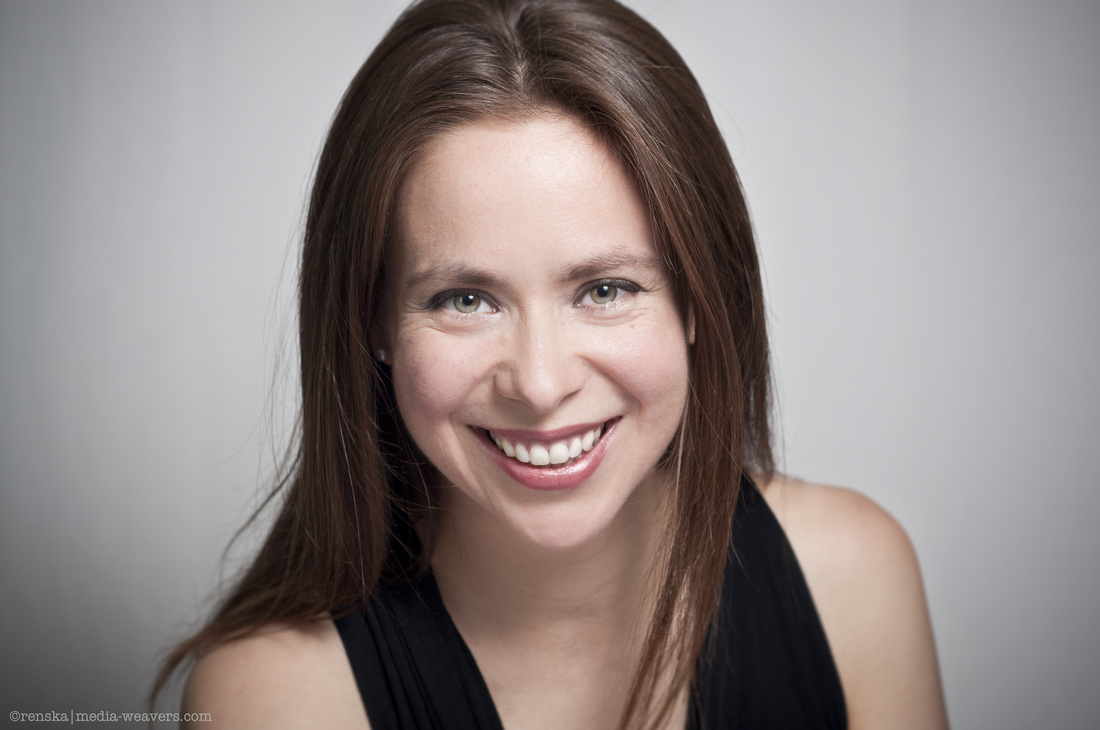Fry, AAM, Egarr, Barbican review – revival and revolution | reviews, news & interviews
Fry, AAM, Egarr, Barbican review – revival and revolution
Fry, AAM, Egarr, Barbican review – revival and revolution
The will of the people writ large in Beethoven’s music for the barricades

Second performances are even more valuable than premieres, composers say, when it comes to launching a piece into the world. Spare a thought, then, for Jan Ladislav Dussek, who has had to wait over two centuries for this prize to be awarded to his Mass in G – really, a Missa solemnis – of a scale to rival Beethoven’s example.
Like Beethoven, Dussek was a composer primarily for and at the piano. He flourished as a touring virtuoso through the cultural capitals of Europe – which in those days included St Petersburg – turning out showpiece concertos and up-to-the-minute crowdpleasers such as “The Naval Battle and Total Defeat of the Dutch Fleet by Admiral Duncan” which doubtless went down a storm with London audiences in 1797.
The Mass, as you might expect, raises its gaze to higher things. Dussek wasn’t a fervent believer, but he applied all his art and craft to following in the footsteps of Haydn, Beethoven and Hummel when commissioned by Prince Nicolaus of Esterhazy to produce a Mass honouring his wife’s name-day. The 15-minute opening Kyrie gives notice of Dussek’s ambition to outstrip them all. It’s a typically volatile work in time and temperament. Monumental Baroque cadences sit cheek by jowl with modulations that would make Beethoven blush, yet the Mass is no tatterdemalion assemblage: this is the sound of Dussek more familiar from his always bold and trend-setting piano sonatas. He could have taught Berlioz a thing or two about outlandish orchestration, such as the architectural elements of flute, viola and double-bass in the Christe, building space from sound.
Not unlike other oddball Czechs such as Zelenka and Reicha, Dussek is an impatient gardener, hardly waiting for one idea to take root and bloom before digging it up and flourishing another, though upward rushing semiquaver scales in the solo writing form something of a leitmotif – Dussek’s right hand hard at work on the keyboard – and the Mass comes briefly to rest on a lovely soprano aria planted in the middle of the Credo, with florid writing owing something to the heroines of the Mozart/da Ponte trilogy, channelled into a stream of contemplation anticipating late Schubert and winningly sung on the night by Stefanie True (pictured below). Helen Charlston, Gwilym Bowen and Morgan Pearse completed a well-matched quartet of soloists. Egarr’s direction accentuated and occasionally exaggerated Dussek’s high contrasts of colour and dynamic. Before the hour was up, we had perhaps had enough and more than enough of attention-grabbing accents and horn blasts like exclamation marks. Even so, such devices belong to an endearingly rustic tradition of Czech Mass writing, with four-square sign-offs – that’s all, folks – which show the dissolute and cosmopolitan Dussek returning to his roots one last time.
Helen Charlston, Gwilym Bowen and Morgan Pearse completed a well-matched quartet of soloists. Egarr’s direction accentuated and occasionally exaggerated Dussek’s high contrasts of colour and dynamic. Before the hour was up, we had perhaps had enough and more than enough of attention-grabbing accents and horn blasts like exclamation marks. Even so, such devices belong to an endearingly rustic tradition of Czech Mass writing, with four-square sign-offs – that’s all, folks – which show the dissolute and cosmopolitan Dussek returning to his roots one last time.
Dussek’s Mass had eaten up the lion’s share of rehearsal time to judge from some tentative entries and scrappy playing in the second half. Full marks to the AAM for enterprise, however: scarcely more than a handful of the audience can have encountered Beethoven’s music for Egmont beyond the overture. Now, with the 250th anniversary of his birth around the corner, is a perfect time to revive the lot, all 45 minutes of songs and entr’actes. The subject itself never grows old. Two centuries on there remains no more powerful musical declaration of freedom in the teeth of oppression than Beethoven’s response to Goethe’s play. Chen Reiss sang prettily, first dashing and then lovelorn as the girl who has won the Dutch nobleman’s heart, hinting at the trouser-role defiance and passion that would achieve full expression in Beethoven’s only completed opera, which was in the process of transition from Leonore to Fidelio as he wrote up Egmont in 1810.
Once Beethoven’s music had become more in demand than Goethe’s play, first Friedrich Mosengeil and then Franz Grillparzer (a favoured poet of Schubert) devised a poetic paraphrase. On this occasion Stephen Fry delivered an uncredited English narration based on Grillparzer, setting the scene in Brussels before filling in the story of Egmont’s defiance of his Spanish overlords and eventual execution. He struck the right, confiding tone, by and large, though a little cautious when speaking over the orchestra in the melodrama which finds Egmont cast into a dungeon (in another echo of Fidelio) and stopping short of the oratorical fervour finally demanded as the hero meets his fate and exhorts his countrymen to rise up in revolution. It was rather the AAM who met Beethoven at the barricades with playing of raw and unbridled passion.
rating
Share this article
Add comment
Subscribe to theartsdesk.com
Thank you for continuing to read our work on theartsdesk.com. For unlimited access to every article in its entirety, including our archive of more than 15,000 pieces, we're asking for £5 per month or £40 per year. We feel it's a very good deal, and hope you do too.
To take a subscription now simply click here.
And if you're looking for that extra gift for a friend or family member, why not treat them to a theartsdesk.com gift subscription?
more Classical music
 Aci, Galatea e Polifemo, La Nuova Musica, Bates, Wigmore Hall review - thrilling Handel at full throttle
Vibrant rendering filled with passion and delight
Aci, Galatea e Polifemo, La Nuova Musica, Bates, Wigmore Hall review - thrilling Handel at full throttle
Vibrant rendering filled with passion and delight
 Hallé, Wong, Bridgewater Hall, Manchester review - Bruckner’s Ninth completed
Kahchun Wong takes Manchester audience on an epic journey
Hallé, Wong, Bridgewater Hall, Manchester review - Bruckner’s Ninth completed
Kahchun Wong takes Manchester audience on an epic journey
 The Orchestral Forest, Smith Square Hall review - living the orchestra from the inside
Immersive concert explores the plight of the British rainforest through music
The Orchestral Forest, Smith Square Hall review - living the orchestra from the inside
Immersive concert explores the plight of the British rainforest through music
 Classical CDs: Leaves, prisms and sub-bass
A great pianist bows out, plus two cello discs and a new organ's first outing
Classical CDs: Leaves, prisms and sub-bass
A great pianist bows out, plus two cello discs and a new organ's first outing
 First Person: Bob Riley on Manchester Camerata's championship of a Centre of Excellence for Music and Dementia
Making a difference out of the musical ghetto
First Person: Bob Riley on Manchester Camerata's championship of a Centre of Excellence for Music and Dementia
Making a difference out of the musical ghetto
 Aurora Orchestra, Collon, Drumsheds review - surround-sound magic in the super-club
On a vast dancefloor, the chance to listen from inside the orchestra
Aurora Orchestra, Collon, Drumsheds review - surround-sound magic in the super-club
On a vast dancefloor, the chance to listen from inside the orchestra
 Kaleidoscope Chamber Collective, Wigmore Hall review - warm and colourful Bartók and Brahms
Versatile chamber ensemble excels in clarinet-focused repertoire
Kaleidoscope Chamber Collective, Wigmore Hall review - warm and colourful Bartók and Brahms
Versatile chamber ensemble excels in clarinet-focused repertoire
 Christian Gerhaher, Gerold Huber, Sheldonian Theatre, Oxford review - an unforgettable recital
The great German baritone in glorious voice at the Oxford International Song Festival
Christian Gerhaher, Gerold Huber, Sheldonian Theatre, Oxford review - an unforgettable recital
The great German baritone in glorious voice at the Oxford International Song Festival
 Kanneh-Mason, Sinfonia of London, Wilson, Barbican review - taking the roof off the Barbican
From musical also-rans to main event, culminating in a stunning Rachmaninov symphony
Kanneh-Mason, Sinfonia of London, Wilson, Barbican review - taking the roof off the Barbican
From musical also-rans to main event, culminating in a stunning Rachmaninov symphony
 Music from Pole to Pole, Clark, City of London Sinfonia, Smith Square Hall review - talk of clouds, music to match
Inspired evening journeying from the Antarctic to the Arctic through patterns in the air
Music from Pole to Pole, Clark, City of London Sinfonia, Smith Square Hall review - talk of clouds, music to match
Inspired evening journeying from the Antarctic to the Arctic through patterns in the air
 Kaleidoscope Chamber Collective, Hatfield House review - musical dreams in marble halls
Stylish, agile playing in the grandest of frames
Kaleidoscope Chamber Collective, Hatfield House review - musical dreams in marble halls
Stylish, agile playing in the grandest of frames
 Music Reissues Weekly: Arvo Pärt - Tabula Rasa
A foundational album returns
Music Reissues Weekly: Arvo Pärt - Tabula Rasa
A foundational album returns

Comments
Did you see when that piece